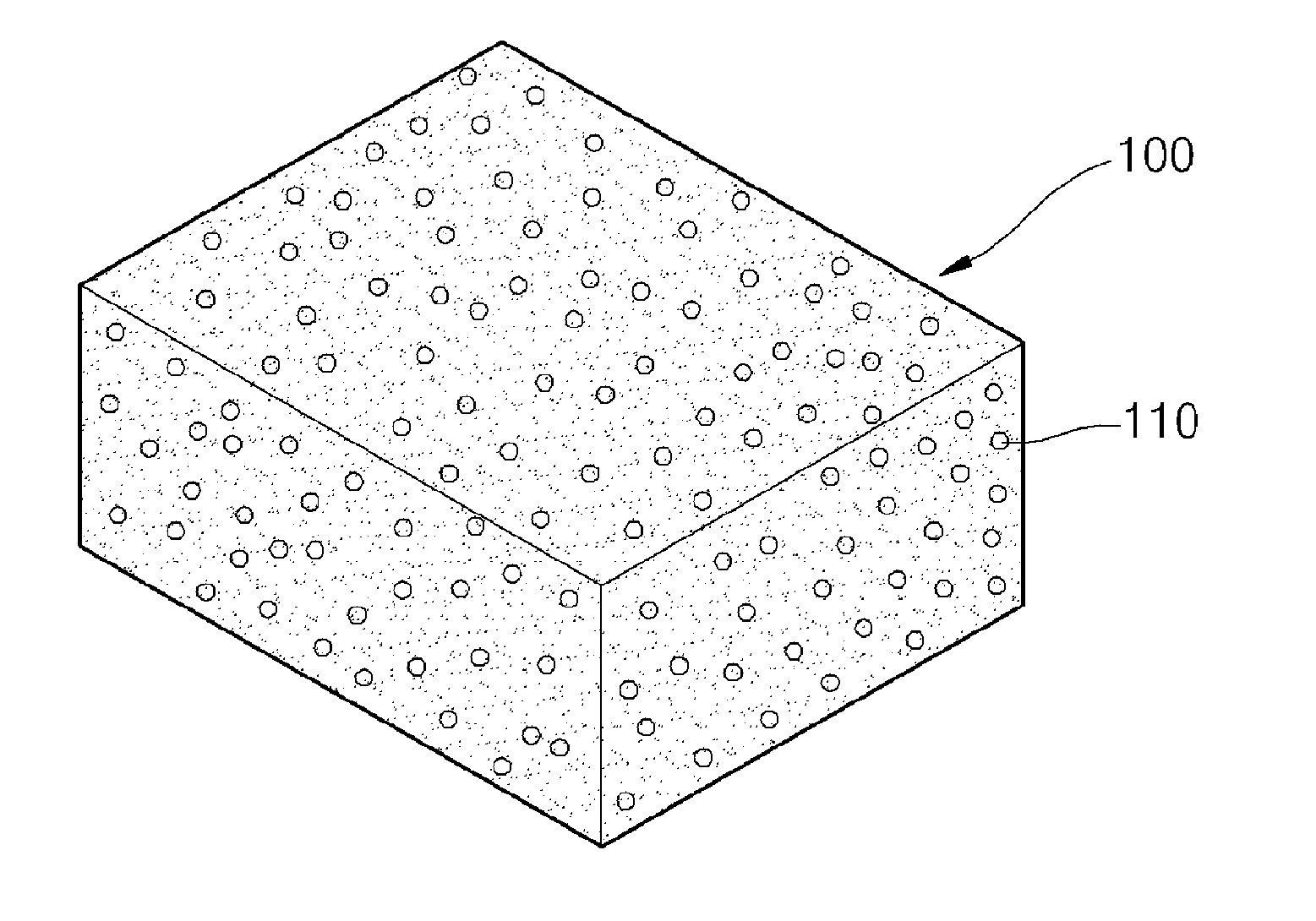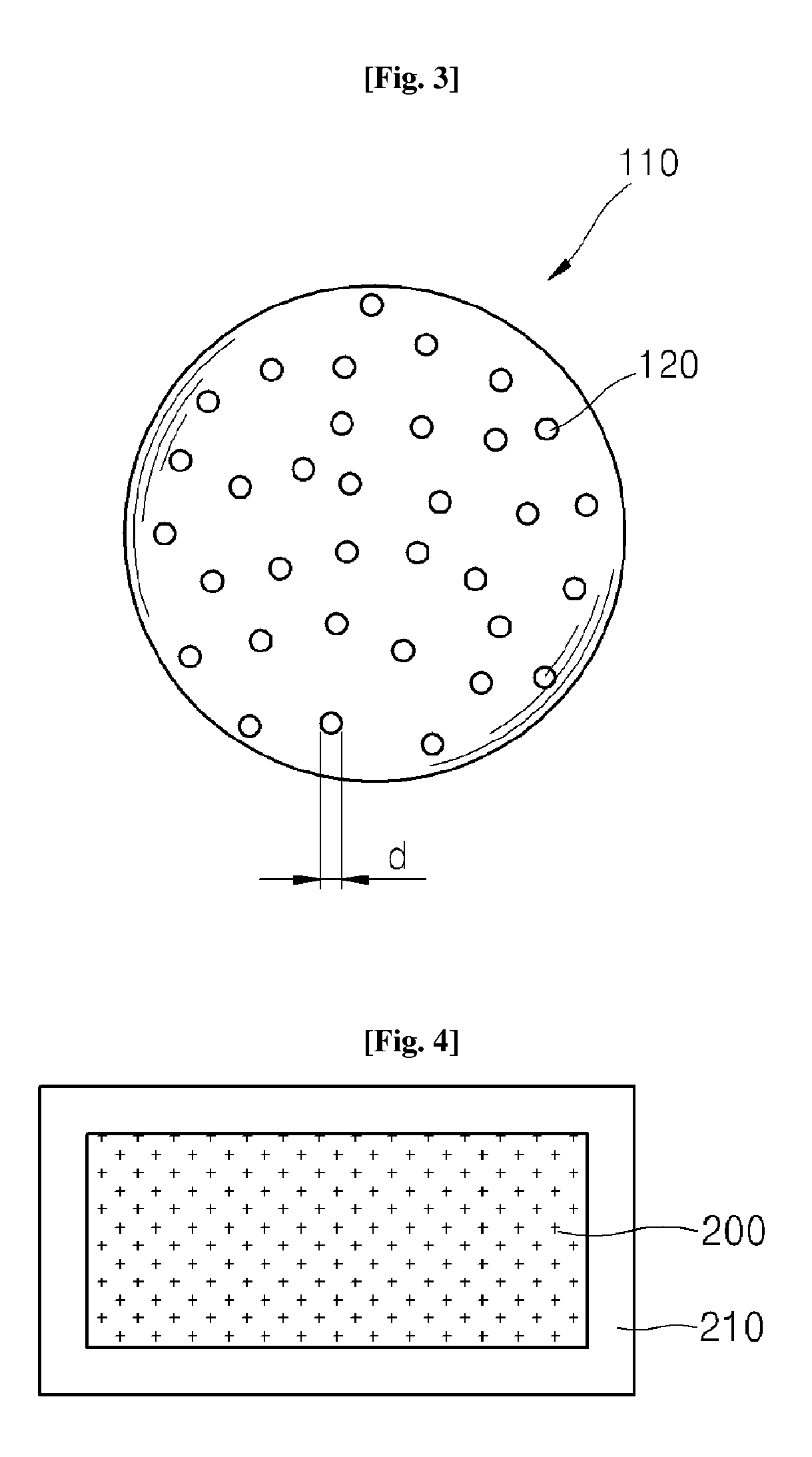Core material for a vacuum insulation panel formed of a phenolic resin-cured foam and vacuum insulation panel using same, and method for manufacturing same
- Summary
- Abstract
- Description
- Claims
- Application Information
AI Technical Summary
Benefits of technology
Problems solved by technology
Method used
Image
Examples
example 1
[0057]First, a cured phenolic resin foam having the structure explained with reference to FIG. 1 was prepared as a core material for a vacuum insulation panel. Specifically, the cured phenolic resin foam included cells whose average diameter was 100 μm and had a closed cell content of 1%, a void content of 97% and a size of 8 mm (thickness)×190 mm (width)×250 mm (length).
[0058]Next, a shell material was prepared. Specifically, the shell material had a structure consisting of a 12 μm thick polyvinylidene chloride (PVDC) / polyethylene terephthalate film (PET), a 25 μm thick nylon film, a 7 μm thick aluminum foil, and a 50 μm thick linear low density polyethylene (LLDPE) film.
[0059]Then, two getter materials were prepared. Specifically, each of the getter materials was produced by putting 25 g of unslaked lime (CaO) having a purity of 95% in a pouch. The getter materials were inserted into the surface of the core material, as illustrated in FIG. 8.
[0060]Then, a pressure of 5 Pa was appl...
example 2
[0062]A vacuum insulation panel was manufactured in the same manner as in Example 1, except that a cured phenolic resin foam including cells whose average diameter was 100 μm and having a closed cell content of 5%, a void content of 93% and a size of 8 mm (thickness)×190 mm (width)×250 mm (length) was used as a core material.
example 3
[0063]A vacuum insulation panel was manufactured in the same manner as in Example 1, except that a cured phenolic resin foam including cells whose average diameter was 100 μm and having a closed cell content of 10%, a void content of 90% and a size of 8 mm (thickness)×190 mm (width)×250 mm (length) was used as a core material.
PUM
| Property | Measurement | Unit |
|---|---|---|
| Temperature | aaaaa | aaaaa |
| Fraction | aaaaa | aaaaa |
| Fraction | aaaaa | aaaaa |
Abstract
Description
Claims
Application Information
 Login to view more
Login to view more - R&D Engineer
- R&D Manager
- IP Professional
- Industry Leading Data Capabilities
- Powerful AI technology
- Patent DNA Extraction
Browse by: Latest US Patents, China's latest patents, Technical Efficacy Thesaurus, Application Domain, Technology Topic.
© 2024 PatSnap. All rights reserved.Legal|Privacy policy|Modern Slavery Act Transparency Statement|Sitemap



